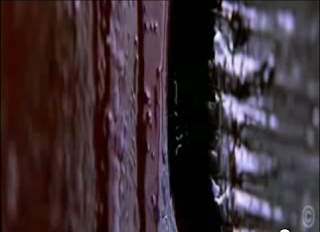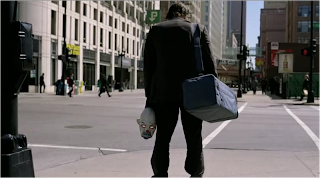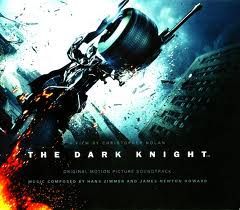MEMENTO OPENING SEQUENCE ANALYSIS
Camerawork
Close up. This camera angle allows us to see the protagonist’s emotions after killing someone. We can see that he is showing no remorse. This subsequently allows us to link the characters relationship with death. He seems to be used to it, we are now weary of him as a character. At this point the protagonist is seen as the antagonist and we believe him to have bad intentions. The fact he killed a bad puts him in a bad light. The opening is sending the wrong signals about the characters role; this confuses the audience thus creating some suspense.

High angle shot including credits. This shot focuses solely on the picture for a minute while the credits role. The picture will play a huge part in the film so placing it behind credits seems to suggest unimportance. However this could be the editor's technique to adding suspense. As the audience we tend to switch of at the credits leaving us susceptible to missing a clue. Although further on into the film we find out that in fact the picture has a major clue. Furthermore the simple and sophisticated credits set the tone for the rest of the film. This lets the audience know the type of film they will be watching, leaving them in no doubt of the tone of the film.
Extreme Close-up. This shot allows us to denote the violent nature of the film. Furthermore the significance of the extreme close up means that we know this death will shape the rest of the film. That bullet could go to play huge significance in the film. It could be used as evidence for a murder. There is a strong indication that the movie will come back to this scene throughout the film, this is because there are many pieces of information that have been left out. Every time it goes back to this scene we think back to the bullet and what is symbolizes.
Mise-en-scene
Recurring Motif. We see this camera in the first 20 seconds. From then the audience are comfortable with the idea of it. During the film the camera is used to signal an important event that needs to keep as a memory and a reminder of Leonard's disability.
Sound
Editing

DARK KNIGHT OPENING SEQUENCE ANALYSIS
Camerawork
Establishing shot. This shot sets the scene extremely well. We fully understand that the film will be set in a cosmopolitan area. All the negative connotations that link with urban life spring straight to mind. Crime, violence, feeling trapped and technology come straight to mind. The tall buildings could also mirror the protagonists feeling of insignificance in the face of all the crime.

Medium shot. This shot allows us to see the figure but not the face of the character. Seeing the figure should comfort us but the purposefully missing face leaves the audience both intrigued and scared. Questions start to pop up immediately. Who is he? What are his intentions? And what significance does he have on the rest of the film?
Mise-en-Scene
Costume. The mask hides the true identity of the character. This gives the impression that the criminal has information to hide. We as an audience fear the unknown and already fear the intentions of the antagonist. The fact that it comes in the opening sequence could suggest that the director is trying to emphasise the importance of this character and that we might be seeing him often throughout the movie.
Mask. The use of this simple but yet terrifying mask is clever. The mask hides the identity of the villains. We have no idea which criminal is the joker. Anyone of the five villains could be the joker which leaves the audience with a feeling of uneasiness.
Sound

Non- Diegetic sound. There is a use of this type of music throughout the first two minutes. The song used is 'I’m not a hero' by Hans Zimmer. This orchestral sound is very ominous and scary. The fact that the narrative jumps straight to such a powerful song suggests straight away that the film is going have elements of danger. The song rises and lowers in volume depending on the intensity of the action and editing cuts. This is clever as the elements work well together to give a sense of trepidation.
Editing
Cuts. Similar to many opening sequences the editing cuts start out quite slow. This allows the audience to enter into a false sense of security. However it is soon clear that the narrative will get more intense. Throughout the robbery the pace in which the cuts appear increase. This is particularly effective in creating tension as the recurring orchestral sound works alongside the cuts. The cuts alone wouldn’t be enough to evoke a sense of fear but using the non-diegetic sound the audience immediately sense danger.







No comments:
Post a Comment